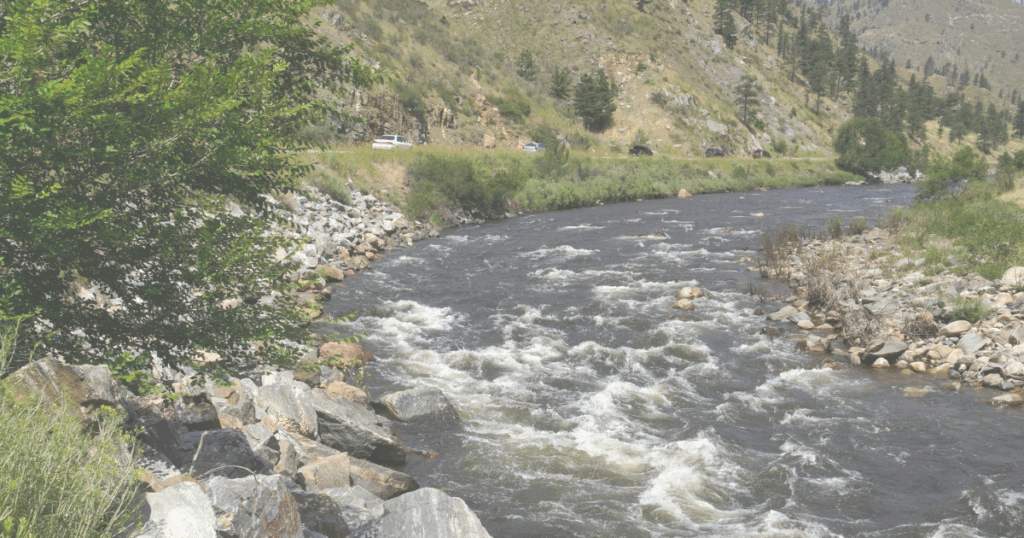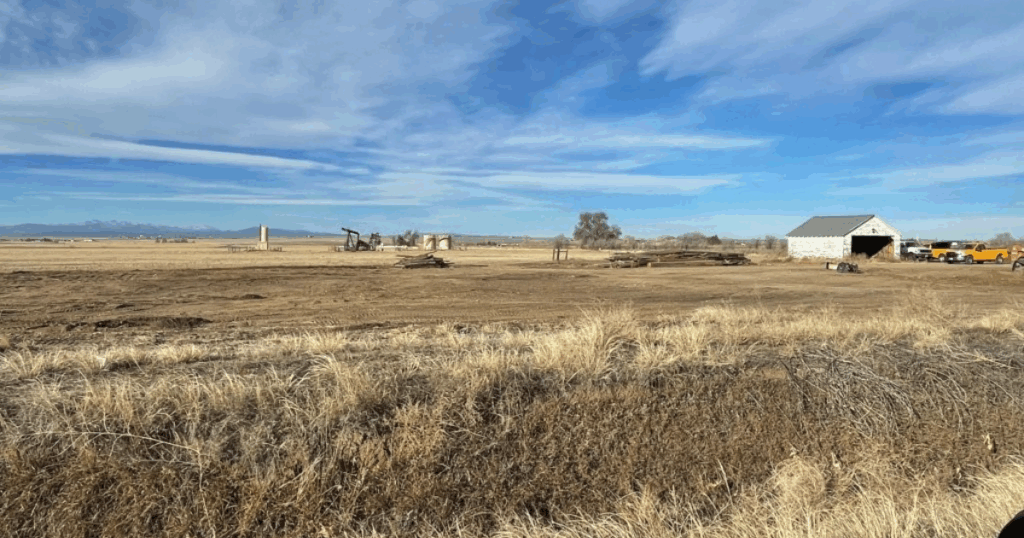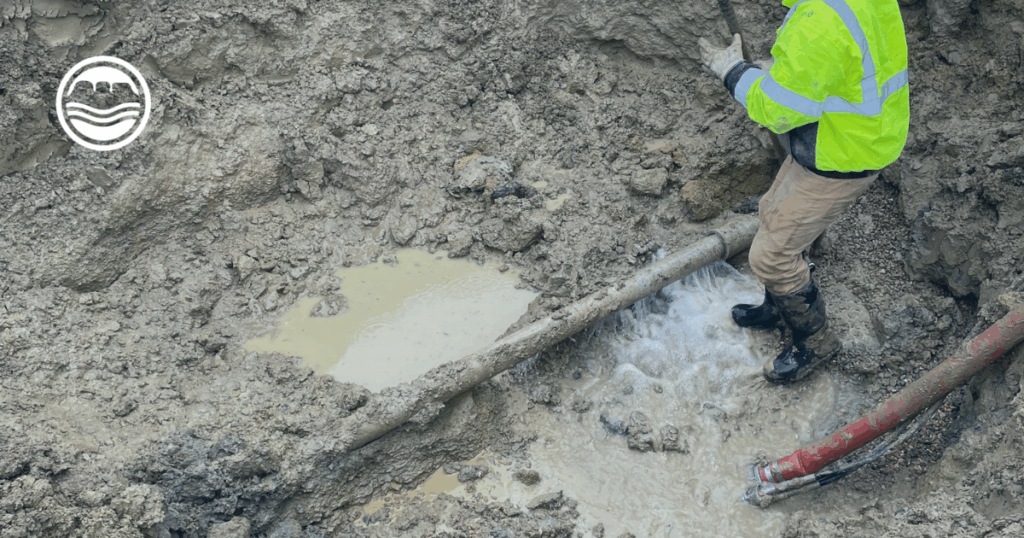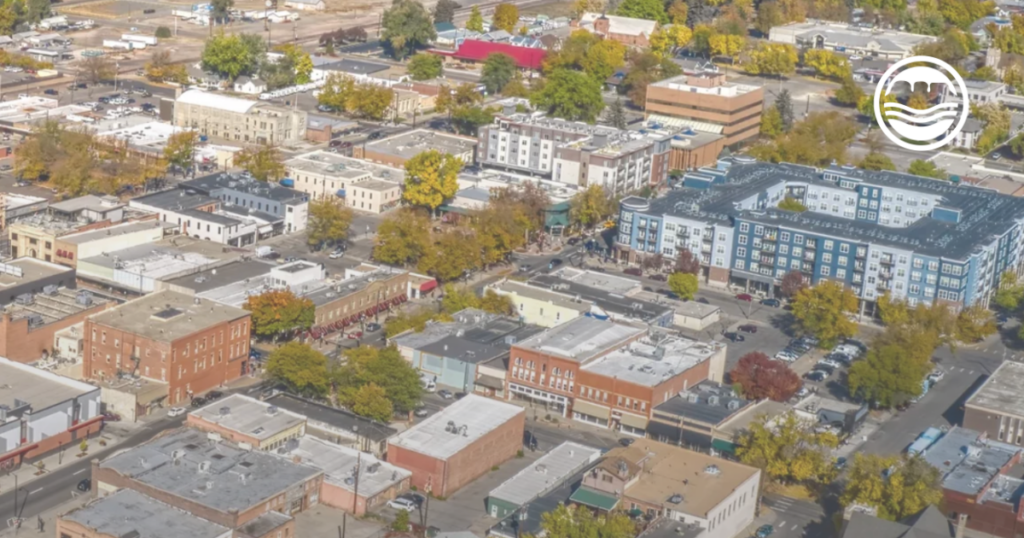As our communities in Northern Colorado continue to grow, proper infrastructure planning becomes increasingly vital. A critical aspect of planning for new infrastructure is sharing utility corridors, where various utility lines, such as water, sewer and dry utilities, coexist within a designated area. In this month’s blog post, we’ll break down what utility corridors are, why they’re shared and the intricate planning that goes into ensuring every resident of Northern Colorado has the utilities they need.
TLDR: Blog Summary
- Utilities such as water, sewer, electrical and telecommunications all run underground and have requirements for how far apart they need to be to prevent contamination and promote ease and safety during future repair projects.
- Sharing utility corridors is a great way to save space and reduce disruption, but it requires significant planning by municipalities and special districts.
- Districts and municipalities must balance the projects they need to complete with city, county and state regulations, as well as timelines for other construction projects to minimize disruption to the community.
What are utility corridors?
Utility corridors are designated spaces where utilities like water, sewer and electrical lines are installed. They exist beneath streets, through open fields and in other public spaces. The purpose of sharing these corridors among utilities is to minimize the space used and reduce environmental disruption. Our utilities run underground, for the most part. However, it’s not quite as straightforward as laying down all the pipes and wires in one giant underground tunnel.
We had the opportunity to chat with our resident expert on sharing utility corridors, Linsey Chalfant, PE, who is currently overseeing a few of our construction projects, so our readers could hear from one of the engineers on our team.
Linsey put it into easy-to-understand terms this way,
“Much like a roadway on the surface that has lanes to coordinate traffic, utility corridors organize the flow of traffic for utilities underground in these right-of-ways.”
The challenge of sharing corridors
As you might imagine, though, there are several factors to consider when working on this complicated puzzle. To start, engineers and city planners must figure out how to maintain proper separations and comply with city and county regulations surrounding the shared use of utility corridors. Initially adopted in 2001, and most recently reauthorized in 2021, the cities of Loveland, Fort Collins and Larimer County agreed upon the Larimer County Urban Area Street Standards (LCUASS), including specifications about how utilities can be installed.
These are some specific rules about how close different types of utilities can be to one another in Larimer County.
- Potable water lines need a 10-foot separation from non-potable utilities such as sewer lines to avoid contamination.
- Potable water lines only need a 6-foot separation from other potable water lines.
- Dry utilities like electrical and telecommunications lines can be installed closer together since they don’t pose contamination risks.
- Water utilities typically need to be 5 feet deep, while dry utilities are installed around 3 feet deep.
These regulations not only prevent potential contamination but also ensure that if one utility provider needs to access its lines, they aren’t buried underneath another utility.
In addition to these regulations, both Larimer County and the City of Fort Collins have different 1041 regulations, which are in place to ensure the protection of public health, safety, welfare, the environment and wildlife resources. If updating infrastructure involves digging in a natural area, for example, an environmental study may have to take place to determine if the project is permissible and what kind of permitting it will need.
Another thing we have to take into account is that multiple utilities of the same type may coexist in the same corridors. For example, FCLWD shares some utility corridors with the City of Fort Collins.
“We have a unique challenge in Fort Collins because we’re putting in new large water transmission lines in older areas of the city,” Linsey shared. “The City of Fort Collins and FCLWD overlap in their service areas, making these right-of-ways really overcrowded, especially in the older parts of the city. So, we have to carefully coordinate when we’re doing something like installing a new, larger 24” transmission line.”
The value of redundancies
You might wonder why we can’t just consolidate water utilities from multiple providers into one big line. The answer lies in differences in water pressure, quality and utility responsibility. Maintaining strong water pressure in three smaller mains is easier than one giant main covering multiple water providers. Additionally, water providers need to be accountable for their own water quality and ensure they’re upholding their commitment to their customers.
Moreover, keeping these waterlines separate ensures that fewer customers are affected if one utility has a line break, and service disruptions are minimized. It also provides redundancy so that water providers can support other providers in an emergency. FCLWD customers experienced the benefit of this ability to share resources in July when Soldier Canyon Water Treatment Plant had a broken pipe, causing the plant to shut down for about seven hours. In this case, FCLWD customers did not lose access to water, thanks to assistance from the interconnect to the city of Fort Collins, along with the water conservation efforts from our customers.
Another recent example of the value of these interconnects and redundancies was the Alexander Mountain Fire that just occurred west of Loveland. During the fire, the City of Loveland contacted us to discuss the possibility of turning on the interconnect with FCLWD if their water treatment plant was compromised. We, in turn, were communicating with the City of Fort Collins about the possibility of turning on several interconnects with them so we could effectively cover the water needs of all our customers, along with a portion of the customers who get their water from the City of Loveland.
Infrastructure planning: more than meets the eye
Most people don’t give much thought to how their lights turn on at night or how water makes its way to their faucets. However, a significant amount of planning is going on behind the scenes to ensure that all utilities are running smoothly at all times. Local special districts and municipalities often conduct monthly and quarterly cross-planning sessions to coordinate infrastructure projects. Linsey shared,
“So much coordination happens on the design side of infrastructure projects. If there is work that the cities need to do, we coordinate our closures so other work can be completed at the same time. For example, with FCLWD’s current Western Backbone Project, when we had Prospect Road closed, the City of Fort Collins took advantage of the closure to complete work on the stormwater infrastructure and sidewalks.”
This regular communication and collaboration reduces the time that roads are closed by allowing multiple projects to coincide. Additionally, FCLWD is mindful of past and future paving projects and aligns new construction with upcoming roadwork. That way, we aren’t tearing out a recently paved road when starting a new project.
Our engineers, like Linsey, are keeping track of and planning for all of these factors when managing a construction project. From very early in the planning phase of a project, Linsey and our other project managers are engaging with stakeholders, working through the permitting process, initiating engagement with 1041 reviews for the county and city and factoring all of this into the building timelines, schedules and costs.
The importance of planning
The sheer amount of planning required to share utility corridors effectively is extensive and requires a lot of collaboration. Sometimes we wish it were as simple as laying pipes and cables wherever we wanted, but all utility providers, including FCLWD, must consider local regulations, environmental impact and future growth when adding new infrastructure. Space is limited, so proper coordination and collaboration with other districts and municipalities are crucial to ensuring that everything fits into place while maintaining safety, efficiency and continuity of service.
 Skip to content
Skip to content








